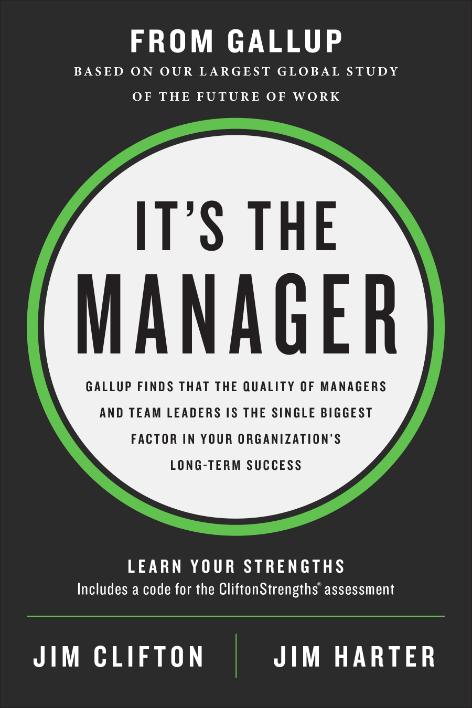Story Highlights
- A CEO's biggest internal concern is retaining talent
- Talented employees leave if they don't have room for development
- Focusing on strengths is the first step in a high-development culture
CEOs worry about losing talent. The Conference Board's C-Suite Challenge 2019 survey found that attracting and retaining top talent is the biggest internal concern for CEOs around the world -- and it should be. Gallup research for It's the Manager shows that hope for career growth opportunities is the "No. 1 reason people change jobs today."
Our research shows that one of the most effective means of keeping talent is to develop it -- your most talented employees are the quickest to leave if they can't learn and grow in their roles. But development isn't a program, it's a culture. Those cultures can be constructed. In fact, we've found companies with cultures of high development share four common traits:
1. High-development cultures are CEO and board initiated.
Culture depends on a functioning purpose that executives originate, and employees understand. Development is a support structure of that purpose -- that's how development gets funding along with sustained attention from leaders and commitment from employees.
2. High-development cultures educate managers on new ways of managing.
Great teams are built around great managers. The best managers have learned that the most effective means of managing -- and developing -- individuals is through engagement, not a command-and-control approach.
3. High-development cultures practice companywide communication.
Gallup research shows that exceptional CHROs build systems that teach managers how to develop employees' strengths in line with company goals. In fact, they create a "champions network" that communicates, collects best practices and answers development questions.
4. High-development cultures hold managers accountable.
The most highly engaged companies see recognition as a means of developing and stretching employees, and they judge managers for their ability to engage workers.
The first, best means of constructing a high-development culture is a focus on strengths. Each employee's CliftonStrengths profile is a roadmap of potential -- people get better faster doing what they're already good at -- that directs managers toward workers' areas of excellence. And people who know and use their strengths are more engaged and perform better as well.
Those attributes improve the success rate of every subsequent development strategy leaders implement.
Think like a mid-level employee.
To construct a culture of high development, start at the very top with the purpose your executives define and operationalize. Their attitudes, beliefs and behaviors about purpose will cascade -- what they believe, everyone will come to believe. Engineer a communication network that carries those values into the lived experiences of workers. Draft a plan that shepherds employees' development, with an eye toward their strengths, throughout their entire career. And, above all else, teach managers how to engage workers. Half of all workers have left a job to get away from a manager at least once.
As you construct this high-development culture, give some thought to a star employee who is halfway down the org chart, where your leadership pipeline begins.
Do your most talented employees know the purpose of your company? Do they know what their next steps are? Do their managers acknowledge their excellent work and look for ways to leverage their strengths and stretch their capacity? Are they part of a network of people who champion development? Are they engaged? Are they bored?
Each employee's CliftonStrengths profile is a roadmap of potential -- people get better faster doing what they're already good at -- that directs managers toward workers' areas of excellence.
If you don't know how your mid-level star would answer, Gallup can help. If you know but don't like his answers, change his mind. It can be done. Indeed, it has to be done -- and the sooner the better -- to keep the best workers on your payroll. Gallup scientists believe the most talented employees probably have high expectations of their workplaces and if they aren't engaged, if they aren't growing and developing, if their strengths aren't appreciated and their contributions not rewarded enough ... there's always someplace else to go.
Be the place stars go to. Define your purpose, educate your managers and hold them accountable. Communicate your commitment to development. Construct a culture of high development and you can stop worrying about losing your talent -- and start being the company other CEOs worry about.
A high-development culture starts with the manager -- here's where the manager can start:
- Learn how to build a high-development culture through your employee engagement strategy.
- Build an organizational culture for better performance with CliftonStrengths.
- Develop effective leadership qualities and learn more about the traits that make high-development cultures in the bestselling book, It's the Manager.





